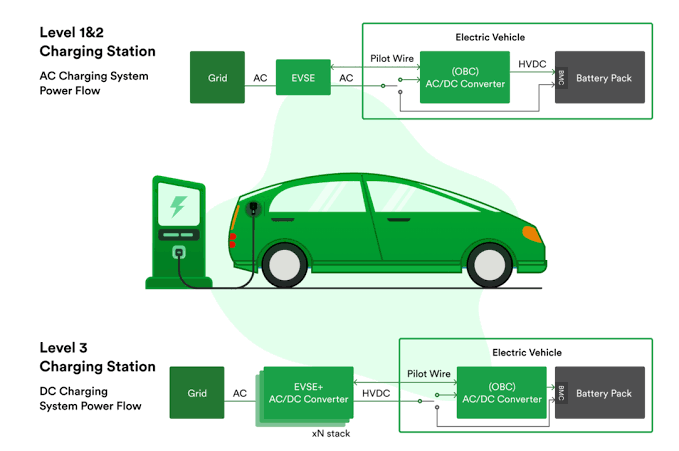Introduction: The Rise of Electric Vehicles Globally
As electric vehicles (EVs) gain widespread adoption, the need for robust and accessible charging infrastructure has become a central issue in the global automotive and energy industries. In 2025, EVs are no longer niche innovations but mainstream transportation options in many countries. Governments, automakers, and private companies are investing heavily in charging technologies to meet growing demand and support sustainability goals.
The future of EVs is tightly linked to the availability, speed, and convenience of charging stations. Without reliable infrastructure, the mass transition to electric mobility will stall. This has led to rapid advancements in infrastructure planning, battery technology, smart grid integration, and renewable energy alignment.
Key Drivers of Charging Infrastructure Development
Several global factors are accelerating the development of EV charging networks in 2025:
- Government mandates: Many countries have set targets to phase out internal combustion engines (ICEs), creating urgency for EV infrastructure
- Consumer demand: Rising EV adoption is pushing public and private sectors to expand charging availability
- Corporate commitments: Automakers and utility companies are entering partnerships to deploy chargers at scale
- Environmental policy: Reduction of carbon emissions and urban pollution is encouraging the use of clean transportation
These drivers are converging to shape a future where EV charging infrastructure is as essential as traditional fuel stations once were.
Types of Charging Solutions and Their Future Evolution
EV charging is not one-size-fits-all. Different types of charging solutions serve various needs based on location, vehicle type, and use case. The future will likely see greater integration and diversification of these charging types:
1. Home Charging
Home chargers remain the most common form of EV charging. With continued improvements in affordability and charging speed, they offer unmatched convenience.
- Smart charging systems allow users to schedule charges during off-peak hours and monitor energy use
- Integration with rooftop solar panels and battery storage is becoming more popular, helping reduce grid demand
In 2025, home charging is evolving into an intelligent system that aligns with the household’s overall energy management strategy.
2. Public Charging
Public charging stations are critical for EV users who travel long distances or live in apartments without private parking.
- Level 2 chargers are common in parking garages, shopping centers, and workplaces
- Fast-charging (DCFC) stations are expanding rapidly along highways and intercity routes
The focus is now on increasing reliability, reducing wait times, and enabling seamless payment systems across regions.
3. Ultra-Fast and High-Power Charging
To meet the demands of long-distance travelers and commercial EV fleets, ultra-fast charging stations are being deployed more widely.
- Charging speeds exceeding 350 kW can top up a battery in under 15 minutes
- These stations require high-capacity grid connections and are often placed at rest stops and logistics hubs
In the near future, ultra-fast charging could become the norm for highway travel, drastically reducing the time barrier for EV adoption.
4. Wireless and Automated Charging
Research and pilot projects in wireless charging have advanced in 2025. These systems allow vehicles to charge without being physically plugged in, using electromagnetic induction.
- Some smart cities are testing inductive charging pads embedded in roads and parking lots
- Robotic charging arms and autonomous chargers are also under development to serve driverless fleets
Though not yet mainstream, these futuristic solutions could revolutionize how we interact with charging stations over the next decade.
Challenges Facing Charging Infrastructure Growth
Despite technological progress, several challenges continue to hinder the smooth expansion of EV charging infrastructure.
- Grid capacity limitations: High demand can strain local power grids, especially in urban centers
- Installation costs: Laying electrical systems, upgrading transformers, and securing permits can be expensive and time-consuming
- Geographic disparity: Rural areas and developing regions lag behind cities in charging access
- Interoperability: A lack of standardized hardware and software can create compatibility issues across networks
Tackling these challenges requires coordinated policy, public-private investment, and ongoing innovation.
Smart Grids and Renewable Energy Integration
The future of EV charging is increasingly tied to the evolution of smart grids and clean energy. Smart charging stations that communicate with the grid can balance electricity demand and supply in real time.
- Vehicle-to-grid (V2G) technology allows EVs to feed stored energy back into the grid during peak demand
- Time-of-use pricing encourages charging during off-peak hours, improving grid efficiency
- Integration with renewable energy sources such as wind and solar further reduces the carbon footprint of charging
By 2025, many urban areas are piloting fully integrated systems that combine EV charging, smart metering, and local solar generation in a unified platform.
Urban Planning and Charging Infrastructure
Cities around the world are incorporating EV infrastructure into urban development plans to support future transportation needs.
- Zoning regulations are being updated to require EV-ready construction in new buildings
- Curbside charging stations are emerging in dense neighborhoods to serve residents without garages
- Mobility hubs now include EV chargers alongside bike-sharing docks and transit terminals
Urban governments are also working to ensure charging access is equitable across income levels and neighborhood types.
Role of Automakers and Tech Companies
Automakers are no longer just selling EVs—they are actively participating in infrastructure deployment.
- Tesla continues to expand its Supercharger network, offering one of the most efficient charging ecosystems
- Companies like Ford, GM, and Hyundai are partnering with tech firms and charging providers to build interoperable networks
- Tech giants including Google and Apple are investing in AI-driven charging software, mapping tools, and payment integration
These partnerships aim to provide a seamless, user-friendly charging experience, reducing barriers to EV ownership.
The Future Outlook: 2030 and Beyond
Looking beyond 2025, the future of EV charging infrastructure will likely be defined by speed, accessibility, and sustainability.
- AI and predictive analytics will manage traffic flow to stations and help users locate available chargers in real time
- Battery swapping stations, particularly for commercial vehicles, may emerge as an alternative in Asia and developing markets
- Decentralized energy models, where homes and cars exchange power with the grid, will gain prominence
By 2030, charging an electric vehicle may be as routine, accessible, and fast as refueling a traditional car is today.
Conclusion: Powering the EV Revolution
The future of electric vehicle charging infrastructure is rapidly unfolding. In 2025, governments, businesses, and innovators are working together to create a network that is efficient, inclusive, and sustainable. From ultra-fast highway chargers to intelligent home systems and wireless experiments, the range of solutions reflects a global commitment to clean mobility.
The transition to electric transportation is no longer just a vision—it is a practical, scalable movement supported by ongoing investments in infrastructure. As technology matures and systems become smarter, EV charging will evolve into a natural part of daily life, powering the next generation of transportation across the world.



